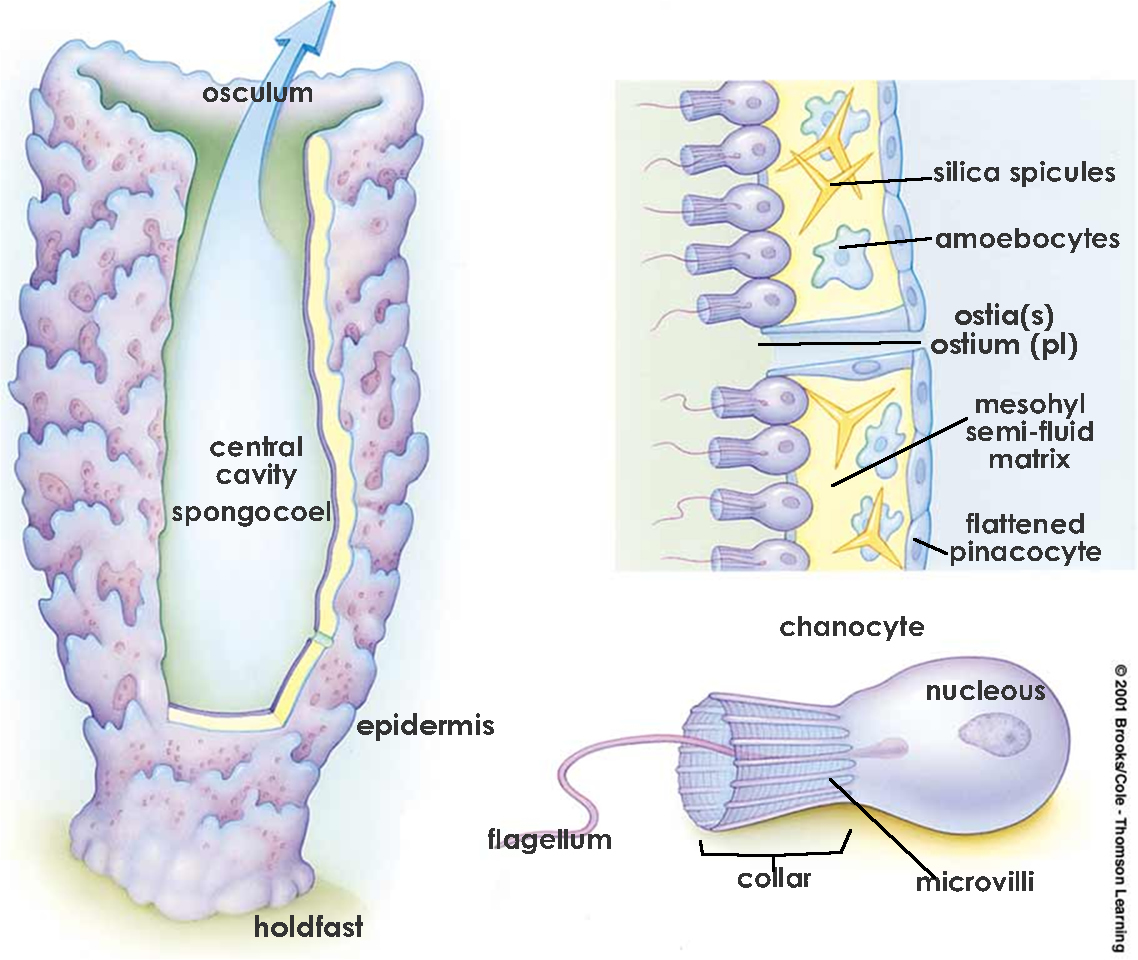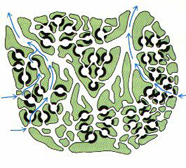Cards In This Set
| Front | Back |
|
MESOHYL
|
 The "connective tissue" of sponges, holding together the various types of ameboid cells, skeletal elements, and fibrils that make up the sponge body. |
|
ASCONOID
|
 Simplest body form of sponges, with canals leading directly from the surrounding water to the interior spongocoel. The asconoid body plan is characterized by a stalk-like spongocoel surrounded by a single layer of choanocytes. |
|
Leuconoid
|
 The body form of highest complexity in sponges. The lueconoid form is highly irregular, displays the greatest degree of folding of the body wall, and has radial symmetry. Lueconoid sponges have clusters of flagellated chambers lined with choanocytes, and water enters and leave the chambers by systems of incurrent and excurrent canals. Most sponges are of the lueconoid type and most lueconoids belong to the class Demospongiae. |
|
Syconoid
|
 Strictly marine form, living in clusters in shallow water, usually attached to rocks pilings, or shells. The body wall is made up of a system of tiny, interconnected, dead-end canals whose flagellated cells draw in water from the outside through _____ pores, take from it the necessary food particles and oxygen, and then empty it into a large central cavity or exit to the outside. Syconoid sponges tend to be larger than asconoids and have a tubular body with a single osculum. |
|
Osculum
|
 An excretory structure in the living sponge, a large opening to the outside through which the current of water exits after passing through the spongocoel. |
|
Spongocoel
|
The large, central cavity of sponges.
Water enters the spongocoel through hundreds of tiny pores (Ostia) and exits through the larger opening (Osculum).
Spongocoel is lined with choanocytes, which have flagella that psuh water through the spongocoel, creating a current.
|



